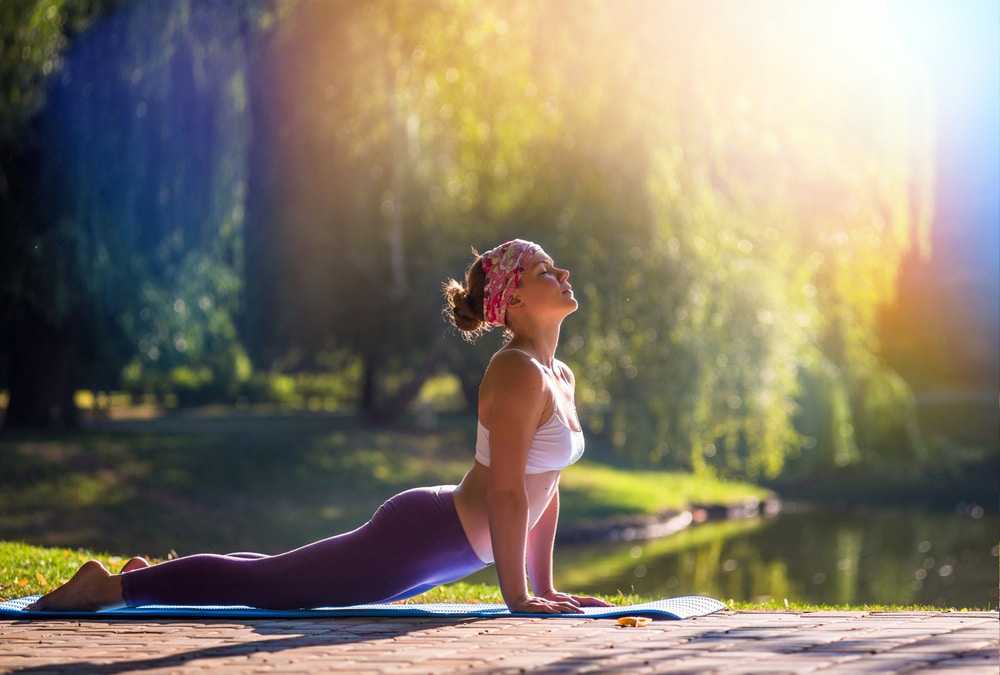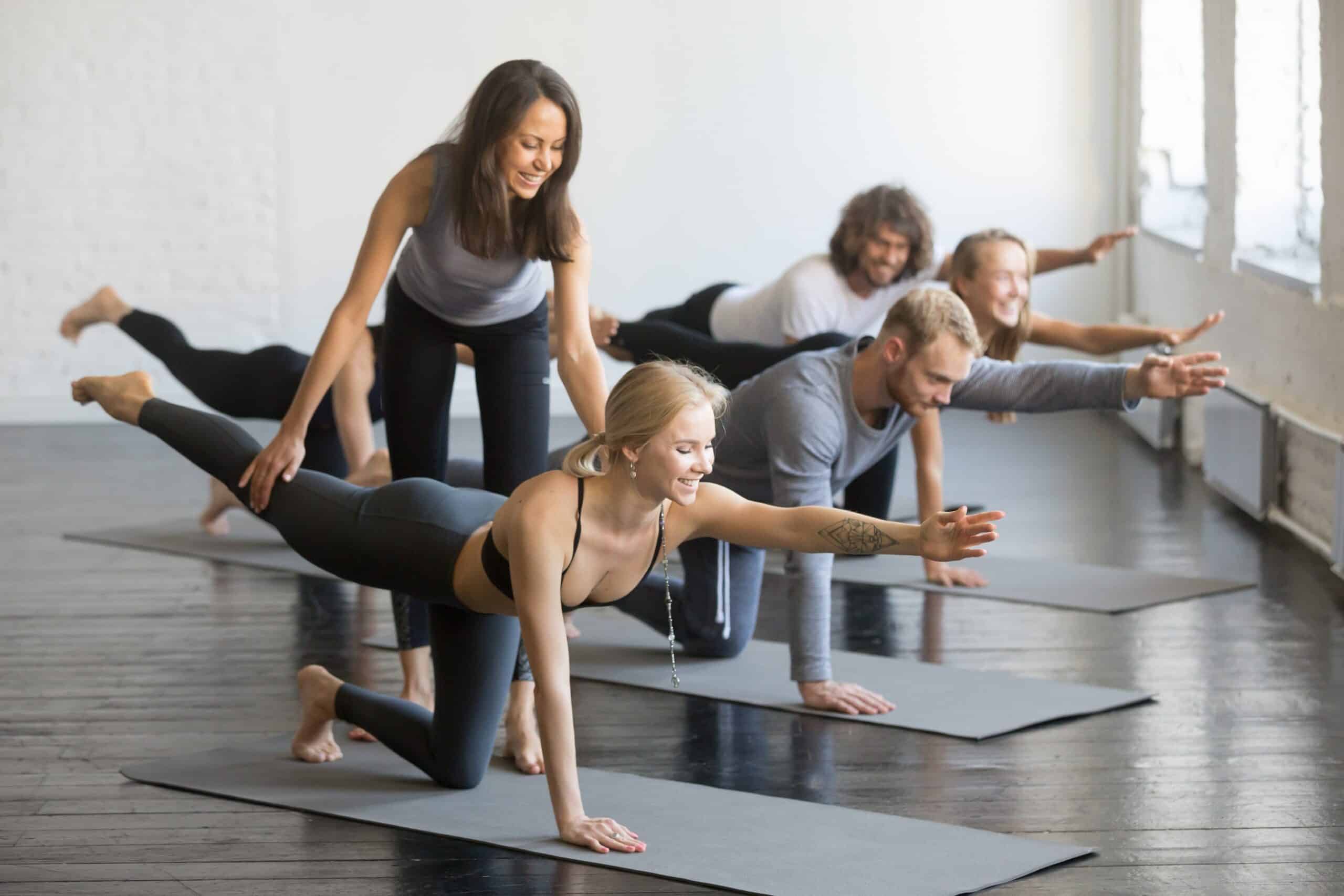Suppose you’re as passionate about yoga as we are. In that case, you might be asking yourself what you can do to transform that passion into a meaningful career.
Maybe you feel it’s your responsibility to share your knowledge of the practice with others, helping them grow on their own journeys. Or perhaps you have a calling to lead a community rather than just be a part of one. It could also be that you’ve already spent years teaching and want to train others on the same path.
Whatever your reasons, becoming a yoga instructor is an admirable ambition — one that allows you to do what you love while earning a livable wage.
And we want to see you succeed in all your endeavors, so we’re here to walk you through everything you need to know to make your dreams a reality.
Here, you’ll find the three steps that are critical to becoming a certified yoga instructor.
How do I train to be a yoga teacher?
Choose your yoga style.
Hot yoga, Vinyasa yoga, Hatha yoga — there’s no shortage of variations on the practice. Considering the diverse range of philosophies and cultures influencing the art, it shouldn’t be too surprising that most yoga instructors or trainers narrow their focus. They learn the ins and outs of their favorite style; and understand that it’s almost impossible to master them all.
In fact, there are more than 20 different styles, and they all require different skill sets. Some are about spiritual healing, while others are about strength and development. Sure, there’s some crossover, but it’s best if you have a specific area of expertise.
Whether you’re interested in guiding students through a slow, methodical healing process or pushing them to their physical limits, there’s a style that will play to your strengths.
Complete at least 200 hours of yoga alliance-approved training.
You’re wondering how to train to be a yoga teacher. Here’s something you should know:
The best yoga instructors have a level of experience that’s vast and varied. They don’t just wake up one morning and decide to open a yoga studio on a whim. They’re intentional. They’re dedicated. And they put in the time it takes to become a teacher people can trust.
That’s why we recommend that anyone hoping to become a yoga teacher or trainer start with a 200-hour program approved by the Yoga Alliance. What is the Yoga Alliance? It’s a nonprofit organization founded to better regulate the yoga industry by establishing standards that support the safe and accessible teaching of yoga. As of April 2020, its database contained more than 7,000 Registered Yoga Schools (RYS) and more than 100,000 Registered Yoga Teachers (RYT).
Throughout your training, you’ll learn about all the associated health benefits of practicing the art while getting a thorough breakdown of all the fundamentals: Poses and safety measures. You’ll also walk away armed with valuable knowledge about the history of yoga, its origins, and how it has evolved across space and time. It’s not all just tablework, either. You will transform what you learn into action with lengthy sessions that challenge you physically.
From there, you’ll be free to apply as a yoga instructor in most establishments. Yet, as we said, the best yoga instructors put in the work. If you’re hoping to really boost your career and make a name for yourself in the community, you might want to opt for a 300-hour or 500-hour certification — these are great opportunities to learn advanced techniques and discover what it takes to become a yoga teacher or trainer.
Earn your RYT certification.
Now you’re what the industry calls a Certified Yoga Teacher (CYT), and you’re legally allowed to start teaching. However, if you want to be employable, we recommend applying for a Registered Yoga Teacher Credential (RYT) through the Yoga Alliance of America. While there are some employers that do not require an RYT Certification, this credential is what will make you stand out amongst your peers, leading to greater opportunities.
What do I need to do before I can train to be a yoga teacher?

What makes yoga training so accessible is that there aren’t any qualifications or prerequisites you need to complete beforehand. You can dive right in and start working your way toward certification.
That said, students generally have a good amount of experience. They’ve already got the basics down, so now they’re just taking their skills to the next level. All training sessions are designed to challenge the student, so we recommend that you immerse yourself in the culture and decide what you hope to get from any 200 or 300-hour trainings before signing up.
Yoga teacher training at Blue Osa
Blue Osa is known for being one of the best yoga teacher training retreats available. It’s a reputation that precedes all our graduates in Costa Rica — and throughout the entire world, opening doors all over the globe.
Our methodology and approach to teaching are significantly influenced by the Himalayan Tradition of Yoga that includes philosophies and teachings passed down from a long history of yoga masters. So we cover a wide range of styles, including Hatha, Iyengar, Vinyasa, and Kundalini.
If you’re looking to become a certified yoga teacher or trainer, our programs give you the unique opportunity to train in a location that’s stunning, peaceful, and far enough away from the hustle and bustle of the rest of the world that you can focus on your learnings.
And because we know yoga is unique to everyone, we offer 14-day and 28-day programs for different skill levels. They’re designed to help you reach your training goals faster in a way that allows for each key learning to sink in and take root in your mind and body:
- Our 14-day, 200-hour yoga teacher training program is a fully immersive experience that will help you build a rock-solid foundation by teaching you stability of the mind and body through muscle activation practices. It’s approved by the Yoga Alliance and includes full accommodations in a stunning environment and three delicious — and healthy — meals per day.
- Our 28-day, 200-hour yoga teacher training program is built for people who truly want to immerse themselves in the practice. The training is slow, methodical, and highly specialized, encouraging students to disconnect from the stress and worry of the world and find their center. We highly recommend this program if you’re looking for long-lasting sustainable transformation. Approved by the Yoga Alliance, the training includes full accommodations and meals made using home-grown organic ingredients.
Ready to get started?







